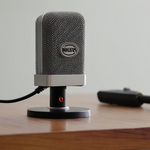
Windows operating systems, particularly Windows 10 and Windows 11, have become the target of significant privacy concerns among users, as these systems collect extensive data about user behavior, device usage patterns, and sensitive information such as location, voice recordings, and peripheral device access. This comprehensive report examines the essential privacy settings in Windows systems, with particular emphasis on webcam and microphone defense, which represents one of the most critical privacy vulnerabilities in contemporary computing environments. The analysis encompasses the foundational privacy controls available to users, the mechanics of permission management across different application types, physical security measures that complement software controls, and the sophisticated diagnostic data collection systems that Microsoft employs. Furthermore, this report explores advanced configuration methodologies, regulatory compliance frameworks, and contemporary security threats that necessitate a comprehensive approach to privacy protection. By understanding these various dimensions of Windows privacy settings, users and administrators can make informed decisions about their data protection strategies and implement layered defenses that address both software-based vulnerabilities and hardware-level risks that emerge from unauthorized access to cameras and microphones.
Foundational Camera and Microphone Privacy Controls
The fundamental architecture of Windows privacy protections centers on granular controls that allow users to determine which applications and services may access sensitive hardware devices such as cameras and microphones. These controls function at both the device level and the individual application level, providing users with multiple layers of permission management. In Windows 10, users access camera and microphone privacy settings by navigating to Start, then Settings, then Privacy, and then selecting either Camera or Microphone. Windows 11 employs a slightly modified interface structure, requiring users to go to Start, then Settings, then Privacy & security, and then Camera or Microphone. This accessibility of privacy controls represents Microsoft’s acknowledgment that end users should maintain agency over their personal data and peripheral device access.
The architecture of these privacy controls begins at the device level, where users must first enable or disable camera and microphone access entirely for the device itself. This foundational setting acts as a master switch that determines whether any application on the system can access these devices. When users disable camera access at the device level, no applications receive permission to use the camera, regardless of their individual permission settings. However, important exceptions exist to this rule, particularly concerning Windows Hello, which represents Microsoft’s biometric authentication system. Windows Hello will access the camera for facial recognition sign-in even when the setting that allows apps to access the camera is turned off, provided that Windows Hello itself is enabled on the system. This exception reflects the design principle that authentication mechanisms must remain available to ensure users can access their own devices. If Windows Hello is disabled, the camera access restriction applies comprehensively without exceptions.
Beyond the device-level controls, Windows differentiates between Microsoft Store applications and desktop applications, a distinction that carries significant implications for permission management and security. Microsoft Store applications appear individually in the privacy settings interface, allowing users to toggle access on or off for each application independently. This granular control enables users to permit camera access only to applications they trust for video conferencing while denying access to other applications that might not require this functionality. Desktop applications, by contrast, cannot be managed individually through the privacy settings interface. Instead, Windows provides a blanket setting called “Allow desktop apps to access your camera” in Windows 10 or “Let desktop apps access your camera” in Windows 11. When this setting is enabled, all desktop applications that interact with the camera can do so, creating a potential security vulnerability if any single desktop application becomes compromised by malware. Turning this setting off impacts all desktop applications that might attempt to access the camera, which can prevent legitimate applications such as Microsoft Teams, Skype, or web browsers from functioning properly with video conferencing features.
Visual and auditory indicators provide users with feedback about when their cameras and microphones are in active use, addressing the concern that unauthorized access might occur without user knowledge. Most modern cameras include LED indicators that illuminate when the camera is actively recording or transmitting video. Microsoft’s documentation explicitly states that if a device comes with a camera light, this light will turn on when the camera is in use. For systems without built-in camera LEDs, Windows provides a notification system that alerts users when the camera turns on or off, ensuring that even if the hardware lacks a physical indicator, users receive software notification of camera access. For microphone usage, Windows displays a microphone icon in the notification area of the taskbar, providing a visual indicator that audio recording is occurring.
The Settings application provides transparency about which applications have recently accessed the camera or microphone, a feature that enables users to audit their device for unauthorized or unexpected access. This functionality became available in Windows 10 versions 1903 and later, and it remains a core feature in Windows 11. Users can view not only which applications currently have access to these devices, but also which applications have accessed them recently, enabling detection of applications that might be behaving inappropriately. For applications that access the camera or microphone indirectly through Windows components, the interface displays the underlying component rather than the application itself. For example, when users interact with Cortana using voice commands, the privacy settings page displays “Speech Runtime Executable” as the entity accessing the microphone rather than Cortana itself. This design reflects the complex architecture of modern operating systems where multiple layers of abstraction exist between user-facing applications and hardware access.
Application Permission Management and Device Access
The permission model that Windows implements for camera and microphone access operates on principles of user consent and explicit authorization, reflecting contemporary privacy frameworks that prioritize informed decision-making by end users. When applications request access to cameras or microphones, users must explicitly grant permission before access occurs. However, the implementation of this consent model differs between Microsoft Store applications and desktop applications, creating asymmetrical security properties across the application ecosystem. Understanding these differences proves essential for users who seek to protect their privacy effectively while maintaining access to applications that legitimately require camera or microphone functionality.
Microsoft Store applications must declare their required permissions before installation, and users can review these permissions as part of the installation process. Once installed, Microsoft Store applications operate within a containerized environment that enforces the privacy boundaries defined by Windows settings. When users open the Camera or Microphone privacy settings page and encounter a list of individual applications, these are typically Microsoft Store applications that can be individually toggled on or off. This architecture provides granular control because each application’s access can be managed independently, allowing users to create a customized permission landscape where some applications have camera access while others do not.
Desktop applications, conversely, typically bypass the granular permission system entirely. Desktop applications are often downloaded from the internet or installed from external media, and they operate with broader system permissions than containerized Store applications. Some desktop applications may install drivers or system-level components that interact directly with camera or microphone hardware, potentially circumventing the Windows privacy controls that operate at the application level. This represents a fundamental architectural difference that creates security implications for users who rely primarily on desktop applications rather than Store applications. The privacy controls that work effectively for Store applications may not provide equivalent protection when desktop applications interact directly with hardware through installed drivers or system components.
The setting labeled “Allow desktop apps to access your camera” or its Windows 11 equivalent “Let desktop apps access your camera” provides the only mechanism for controlling whether desktop applications can access camera hardware. Importantly, this setting operates as a blanket control that affects all desktop applications simultaneously. When enabled, it permits all detected desktop applications that have previously interacted with the camera to continue doing so. When disabled, it prevents all desktop applications from accessing the camera through standard Windows APIs, though applications that have installed system drivers may still circumvent this protection. This all-or-nothing approach to desktop application permissions reflects the technical reality that Windows cannot reliably distinguish between trustworthy and untrustworthy desktop applications, as desktop applications can install system-level code that operates outside the Windows permission framework.
Users should note that disabling camera or microphone access for desktop applications may impact legitimate functionality, particularly for communications applications and web browsers. Many web browsers such as Microsoft Edge operate as desktop applications rather than Store applications, meaning they fall under the desktop application permission category. Similarly, video conferencing applications such as Microsoft Teams may operate as desktop applications depending on the installation method, and disabling desktop application access to these devices will prevent them from functioning properly. Users must therefore balance the desire for maximum privacy protection with the practical need to allow legitimate applications to function as intended.
The concept of least privilege permissions, while primarily associated with application security, has relevance to personal privacy in Windows settings. This principle suggests that applications should receive only the minimum permissions necessary to perform their intended functions. Users who practice least privilege principles when granting camera or microphone permissions enhance their privacy posture by ensuring that applications with no legitimate need for these devices never gain access to them. For instance, a text editor has no legitimate need to access a microphone, so granting microphone permission to a text editor application would violate least privilege principles and should be denied.
Physical Security and Hardware Controls
While software-based privacy controls represent the primary means through which Windows manages camera and microphone access, physical security measures complement these digital protections by providing defense against threats that software alone cannot address. Physical security measures operate under the principle that if software becomes compromised by malware or if a vulnerability is discovered in the operating system, physical barriers can still prevent unauthorized access to sensitive hardware. This layered approach to security has become increasingly recognized as necessary in professional environments where sensitive information is handled routinely.
Camera LED indicators, which have become nearly ubiquitous on modern laptops and external cameras, provide users with a simple but effective method for detecting when their cameras are actively in use. The physical principle underlying camera LEDs involves wiring the LED indicator directly in series with the camera’s power supply, ensuring that the LED illuminates whenever the camera draws power. This hardware-level implementation means that LED indicators are extremely difficult to compromise through software attacks because the camera’s physical circuitry controls the LED independently of the operating system. If a user observes their camera LED illuminated when they have not intentionally activated the camera, this provides strong evidence of unauthorized access. However, users should be aware that some sophisticated attacks may disable the LED indicator through firmware modifications, so the LED should be viewed as one component of a defense strategy rather than a complete guarantee of privacy.
Privacy shutters and webcam covers represent a physical barrier approach to camera privacy that provides absolute protection regardless of software vulnerabilities. These devices cover the camera lens with an opaque material that completely blocks the camera’s view when closed. The shutter can only be opened or closed through physical manipulation of the hardware, making it immune to software-based attacks. Many modern laptops, particularly those marketed for business use, include integrated privacy shutters that slide mechanically to cover or uncover the camera. For users whose devices lack built-in shutters, aftermarket privacy covers can be affixed to external cameras or integrated cameras, though some users employ simpler solutions such as taping paper or sticky notes over the camera lens. The advantage of physical covers lies in their simplicity and the certainty they provide, as a closed shutter absolutely prevents any visual access to the camera, making them effective against the most sophisticated malware imaginable.
The technical guidance provided in Windows documentation regarding privacy shutters acknowledges this reality by recognizing that physical shutters represent a critical layer of defense. Specifically, Microsoft’s technical documentation describes the expected behavior when devices have privacy shutters, noting that when a shutter is closed, users expect to be protected against any unexpected camera access. This expectation reflects the principle that a privacy shutter provides a level of security that is “hardened against any practical software attack,” meaning that even if an attacker gains complete control of the operating system and all software on a device, the physical shutter still prevents visual access to the camera. However, the documentation also notes important nuances regarding shutters that cover multiple cameras, as some devices include both RGB (visible light) and infrared (IR) cameras for features like Windows Hello facial recognition. When both camera types exist on the same panel, the privacy shutter ideally covers both, preventing IR access even if the LED indicator or notification systems might not indicate IR usage.
External cameras that connect via USB represent another consideration in physical security strategy. When users are not actively using an external camera, simply disconnecting it from the USB port eliminates the possibility of unauthorized access entirely. This straightforward approach has no software-based equivalent and requires no technical knowledge to implement. Some professionals maintain the practice of disconnecting external cameras when not in active use, ensuring that even if their system becomes compromised by malware, the malware cannot access a camera that is physically disconnected from the computer.
For users who do not use their camera at all, disabling it through UEFI (Unified Extensible Firmware Interface) settings, also known as BIOS settings in older systems, provides a permanent hardware-level disable that prevents even the operating system from accessing the camera. This approach requires restarting the computer and pressing the designated key during the boot sequence to access firmware settings, then navigating to advanced device options and disabling the camera. Once disabled at the firmware level, the camera becomes inaccessible to Windows and all applications running on Windows, providing absolute assurance that camera access cannot occur through any software-based means.

Windows Diagnostic Data and Telemetry Systems
Beyond the specific privacy concerns associated with camera and microphone access, Windows systems collect extensive diagnostic data about user behavior, system performance, and application usage patterns. This diagnostic data collection represents a significant privacy consideration for many users, particularly those who work with sensitive information or maintain strict privacy standards. The scope and nature of diagnostic data collection in Windows reflects Microsoft’s business model, which increasingly relies on understanding user behavior to deliver personalized experiences and targeted advertising.
Windows diagnostic data exists in multiple categories, ranging from minimal required diagnostic data to extensive optional diagnostic data that includes information about websites visited and search queries performed. The diagnostic data setting on Windows 10 and Windows 11 devices can be configured to one of several levels through Settings or Group Policy. The “Required diagnostic data” level, also referred to as “Basic” in some contexts, collects only essential information about the operating system’s stability and performance. This level includes data about system crashes, driver failures, and basic usage information necessary for Microsoft to maintain and improve Windows quality. In contrast, the “Optional (Full)” diagnostic data level, also referred to as “Enhanced” diagnostic data, collects substantially more information including data about websites visited through Microsoft Edge, web search queries, usage of specific applications, and even typing patterns.
The speech recognition feature in Windows represents a significant privacy consideration within the diagnostic data collection system. Windows 11 offers both offline speech recognition that occurs locally on the device and online speech recognition that transmits audio samples to Microsoft servers for processing. Online speech recognition improves the accuracy of speech recognition by sending voice clips to Microsoft servers where machine learning models can analyze them. Microsoft’s documentation states that with permission, voice clips recorded when users interact with voice-enabled Microsoft products will occasionally be sampled and listened to by Microsoft employees or contractors for the purposes of improving speech recognition technology. These voice clips undergo de-identification processing to remove associations with Microsoft accounts or device identifiers, and automatic filtering attempts to remove sensitive information such as phone numbers or credit card numbers. However, the transmission of any voice data to external servers represents a privacy concern for users who prefer all voice processing to occur locally on their devices.
The “Improve inking and typing” setting collects samples of content that users type or write on touchscreen devices to improve handwriting recognition, text prediction, and spelling correction features. When enabled, this setting causes Windows to collect samples from user input, process these samples to remove unique identifiers and other identifying information, and send the processed data to Microsoft. The resulting data allows Microsoft to improve typing and handwriting recognition for all Windows users by aggregating information about how people use keyboards and touchscreens. However, this feature also raises privacy concerns because the typing or inking samples, despite claims of de-identification, may still contain sensitive information that users prefer not to transmit to external servers.
Diagnostic data can be viewed, deleted, and exported through the Diagnostic Data Viewer, which provides transparency about what information Windows has collected on a user’s device. Users can open the Diagnostic Data Viewer to examine the specific diagnostic information that has been collected, gaining visibility into the scope of data collection on their systems. This transparency feature reflects Microsoft’s acknowledgment that users should be able to inspect the data being collected about their device usage. Furthermore, users can delete diagnostic data through the Settings application by navigating to Privacy & security, then Diagnostics & feedback, and clicking the Delete button under the “Delete diagnostic data” heading.
The Windows diagnostic data processor configuration, available on Windows 10 Professional and Education editions and Windows 11 Professional and Education editions, provides enhanced privacy controls for organizations subject to General Data Protection Regulation (GDPR) requirements. This configuration option makes the organization the data controller for diagnostic data rather than Microsoft, providing greater control over how diagnostic data is processed and stored. Organizations that enable the Windows diagnostic data processor configuration gain the ability to view, export, and delete diagnostic data associated with specific user accounts.
Advanced Privacy Configuration Methods
While the Settings application provides the most accessible interface for managing Windows privacy settings, advanced users and system administrators often employ alternative configuration methods that offer broader control or enable organization-wide policy implementation. These advanced methods include Group Policy Editor for domain-joined systems, Registry Editor for local policy implementation, and PowerShell scripts for batch processing of privacy settings across multiple devices.
Group Policy Editor (gpedit.msc) provides a centralized interface for configuring Windows settings through policies that apply at the device or user level. For camera privacy, administrators can navigate to Computer Configuration, then Administrative Templates, then Windows Components, then Camera, where the “Allow Use of Camera” policy can be set to Enabled or Disabled. Similarly, microphone access can be controlled through policies under Computer Configuration, Administrative Templates, Windows Components, and App Privacy. Group Policy settings typically override user-level settings, meaning that if a Group Policy is applied at the machine level, users cannot change the setting through the Settings application, which displays “Some settings are managed by your organization” when policies are in effect.
Location services can be controlled through the registry key Computer\HKEY_LOCAL_MACHINE\SOFTWARE\Policies\Microsoft\Windows\LocationAndSensors by modifying the DisableLocation DWORD value to 1 (disabled) or 0 (enabled). Registry-based modifications provide granular control but require administrative privileges and carry risk of system instability if performed incorrectly.
PowerShell scripts enable batch modification of privacy settings across multiple devices, making them particularly useful for enterprise environments where consistent privacy policies must be applied to numerous systems. The Set-Privacy PowerShell script allows administrators to apply predefined privacy configurations such as “Strong,” “Balanced,” or “Default” across all user accounts on a device or across multiple devices. The script can modify numerous privacy-related settings through automated registry modifications, applying complex configurations that would be time-consuming to implement manually on each device. This automation capability makes PowerShell scripting an efficient method for organizations seeking to standardize privacy configurations across their infrastructure.
Concerns about administrative rights and user privileges affect privacy control implementation, as some privacy settings can only be modified by users with administrative privileges on their systems. When devices are used in workplace environments where users lack administrative rights, they cannot modify privacy settings through the Settings application, leaving organizational administrators in control of privacy configuration. This control structure ensures that employees in compliance-sensitive roles follow privacy policies established by their organizations, but it simultaneously prevents individual users from implementing additional privacy protections if organizational policies are less restrictive than desired.
Data Protection and Regulatory Compliance
The Windows diagnostic data system interacts with privacy regulations and data protection frameworks that establish requirements for how personal data must be handled, particularly in the European Union where General Data Protection Regulation (GDPR) requirements apply. Microsoft’s implementation of privacy controls must balance the desire to collect useful diagnostic data for product improvement with regulatory requirements that give individuals rights to access, delete, and understand what data organizations collect about them.
The concept of data subject rights emerges from GDPR and similar regulations, establishing that individuals have the right to access personal data held about them, the right to deletion of personal data, and the right to understand how their data is being processed. Windows provides mechanisms through which users can exercise these rights with respect to diagnostic data collected about their device usage. Users can access their diagnostic data through the Diagnostic Data Viewer, delete diagnostic data accumulated on their devices, and export diagnostic data in a machine-readable format.
The Windows diagnostic data processor configuration specifically addresses GDPR compliance by establishing clear data controller relationships for organizations subject to European data protection requirementsConfigure Windows diagnostic data in your organization. Organizations in the European Union that enable this configuration become the data controller for diagnostic data collected from their Windows devices, a distinction that carries significant legal implications under GDPR. The processor configuration requires that devices be joined to Microsoft Entra (formerly Azure Active Directory), enabling device-level management of privacy settings and diagnostic data.
Location services represent another area where regulatory compliance interacts with privacy settings, particularly in terms of how Windows handles location information. When location services are enabled, Windows collects location information from multiple sources including GPS, nearby wireless access points, cellular towers, and IP addresses. This location data, once collected, may be sent to Microsoft or to location service providers such as HERE and Skyhook after removing identifying information. However, the documentation explicitly states that some third-party applications may use alternative technologies such as Bluetooth, IP addresses, or cellular modems to determine device location even when Windows location services are disabled. This reality creates gaps between what users believe their privacy settings control and what those settings actually prevent, particularly for applications that interact directly with hardware systems outside the Windows permission framework.
Activity history and timeline features in Windows operate under privacy policies that allow users to delete activity history from their devices and, in older versions of Windows, from the cloud. Activity history tracks applications used, files opened, and websites visited, storing this information locally on the device. In Windows 10 and older versions of Windows 11, users could optionally sync activity history to the cloud where it would be associated with their Microsoft account. However, this cloud synchronization option has been deprecated in more recent Windows versions, and activity history is now stored locally on the device only. Users can delete their activity history at any time by navigating to Settings, Privacy & security, Activity history, and selecting “Clear history,” which removes locally stored activity data.

Security Threats and Best Practices
The motivation behind comprehensive privacy controls in Windows emerges from legitimate security threats that exist in contemporary computing environments, where malware, spyware, and other malicious software can interact with camera and microphone hardware to conduct surveillance. Understanding these threats provides context for why privacy controls matter and why implementing layered security approaches combining software controls and physical protections proves necessary.
Phishing attacks represent one vector through which unauthorized access to camera and microphone systems may occur. Phishing emails often contain malicious attachments or links that, when clicked or opened, install spyware or other malicious software on the user’s device. This malware may include functionality to access camera or microphone hardware, transmitting captured video or audio to the attacker. Users can defend against phishing by remaining cautious when opening emails from unknown senders, avoiding clicking suspicious links, and using antivirus software that detects and removes known malware.
Anti-malware and antivirus software provides an important protective layer by scanning systems for known malware signatures and behavioral patterns indicative of malicious activity. Windows Defender, which is built into Windows systems, offers protection against many common threats, and maintaining this protection through regular updates ensures that the latest malware signatures and detection patterns are available. Microsoft Defender SmartScreen adds an additional layer of protection by checking websites and downloaded files against lists of known malicious content. However, the ongoing development of novel malware techniques means that antivirus protection cannot provide complete assurance against all threats, making it one component of a comprehensive security strategy rather than a complete solution.
Regular software updates and patches represent a critical component of security maintenance, as updates frequently address security vulnerabilities that attackers could otherwise exploit. Windows Update delivers security patches to operating system components, and users should enable automatic updates to ensure that the latest patches are applied promptly. Additionally, firmware updates for cameras, microphones, and other hardware devices may address security vulnerabilities at the device level, making these updates important to apply when available.
Desktop apps that access camera and microphone hardware through installed drivers represent a particular security concern because these applications can bypass the Windows permission framework. Applications that install system drivers gain access to hardware resources without necessarily going through the application permission checks that apply to Store applications. This creates situations where malicious desktop applications or compromised legitimate applications can access camera or microphone hardware even when users believe they have disabled access to these devices. Users can reduce this risk by only installing desktop applications from trusted sources and by regularly reviewing what applications are installed on their systems.
Specialized Privacy Features
Windows includes several specialized privacy features that address specific concerns or provide additional control over particular aspects of user data and device functionality. Windows Hello for Business represents one such specialized feature that raises important privacy considerations related to biometric data storage and transmission. Understanding how these features handle sensitive information helps users make informed decisions about whether to enable them.
Windows Hello for Business implements biometric authentication using facial recognition, fingerprint scanning, or iris recognition to enable passwordless sign-in to devices and applications. The biometric data used to support Windows Hello is stored on the local device only and is never transmitted to Microsoft servers or external devices. This design principle of local-only storage for biometric data reflects privacy best practices that minimize exposure of sensitive biometric information. The biometric template generated from facial recognition, fingerprint scans, or iris images is encrypted using AES encryption before being stored on the device, and this encrypted template cannot be converted back into the original biometric sample even if an attacker gains access to it.
However, Windows Hello does collect diagnostic information about how users use the biometric authentication feature, including information about whether users successfully authenticated using facial recognition, fingerprints, or other biometric methods, how frequently they use these methods, and whether authentication succeeded or failed. This diagnostic information is stripped of identifying information before transmission to Microsoft, but it still represents data collection that some privacy-conscious users might wish to disable. The biometric data itself never leaves the device, providing strong privacy protection for the sensitive biological information used to authenticate users.
Cortana, Microsoft’s voice-activated digital assistant, represents another specialized privacy consideration because it requires microphone access and audio processing to function. When Cortana is enabled, it can access device location information to provide contextual assistance such as traffic alerts or location-based reminders. The search function in Windows also uses Cortana’s infrastructure, which has implications for privacy when users search their devices using the search function. Users who do not use Cortana can disable it to prevent it from accessing location information, and hiding Cortana from the taskbar stops it from appearing in the user interface.
The advertising ID in Windows represents a unique identifier that Microsoft generates for each user on a device, which app developers and advertising networks can use to provide targeted advertising. When the advertising ID is enabled, app developers associate personal data they collect about users with the advertising ID, enabling them to deliver more relevant advertisements. Users who prefer not to receive targeted advertising based on their behavior can disable the advertising ID by navigating to Settings, Privacy & security, Recommendations & offers (or General in some Windows versions), and toggling off the advertising ID setting. Disabling the advertising ID will not reduce the number of advertisements displayed, but it will likely make advertisements less relevant to the user’s interests.
Recommendations and Best Practices
Protecting privacy in Windows systems requires a comprehensive approach that combines software-based controls with physical security measures and thoughtful decisions about which applications receive access to sensitive hardware and personal data. For individual users seeking to maximize privacy protection, several key recommendations emerge from the available tools and features.
First, users should review their camera and microphone permissions regularly, examining which applications have been granted access and removing access from applications that do not require it. The Settings application provides visibility into which applications have accessed cameras or microphones recently, enabling users to detect unexpected access patterns that might indicate malware or untrustworthy application behavior.
Second, implementing physical security measures provides defense against threats that software alone cannot address. Users should investigate whether their devices include built-in camera privacy shutters and familiarize themselves with how to use them. For devices without built-in shutters, aftermarket privacy covers can be affixed to provide physical blocking of the camera lens. External webcams should be disconnected when not in active use, and users working with particularly sensitive information should consider disabling their integrated cameras through UEFI settings if they do not regularly use video conferencing.
Third, users should maintain awareness of the diagnostic data being collected on their devices and configure diagnostic data settings to reflect their privacy preferences. While required diagnostic data collection cannot be completely disabled on consumer versions of Windows, users can set diagnostic data to the Required level rather than allowing Optional diagnostic data collection. This setting reduces the amount of information transmitted to Microsoft while still allowing Windows Update and other critical services to function.
Fourth, for users who do not use specialized features such as online speech recognition, Cortana, or the advertising ID, these features should be disabled through their respective settings to reduce data collection. Each disabled feature reduces the surface area of data collection and the potential for privacy violations.
Implementing Your Windows Privacy Essentials
Windows privacy settings encompass a complex ecosystem of controls, data collection systems, and security considerations that require understanding to manage effectively. The fundamental camera and microphone privacy controls provide users with meaningful opportunities to prevent unauthorized access to these sensitive devices, though implementation differs between Microsoft Store applications and desktop applications in ways that affect the completeness of protection achieved. Physical security measures including camera LED indicators, privacy shutters, and disconnectable external cameras complement software-based controls by providing defense against threats that software alone cannot address. The diagnostic data collection systems employed by Windows represent significant privacy considerations, particularly for users who work with sensitive information or maintain strict privacy standards. Advanced configuration methods including Group Policy, Registry editing, and PowerShell scripting enable administrators and technically proficient users to implement organization-wide or device-wide privacy policies. Regulatory compliance frameworks such as GDPR interact with Windows privacy settings to establish how organizations must handle personal data and what rights individuals have to access and delete that data. Security threats including phishing attacks, malware, and unauthorized access attempts provide justification for implementing comprehensive privacy protections that operate at multiple levels. By understanding the capabilities and limitations of Windows privacy settings, users can implement layered defense strategies that meaningfully protect their privacy while maintaining access to applications and features that enhance their computing experience.
Protect Your Digital Life with Activate Security
Get 14 powerful security tools in one comprehensive suite. VPN, antivirus, password manager, dark web monitoring, and more.
Get Protected Now





